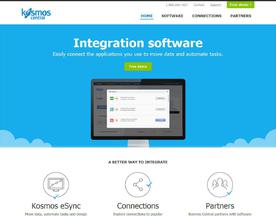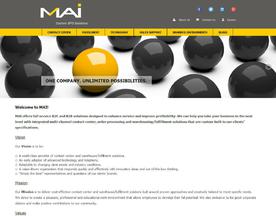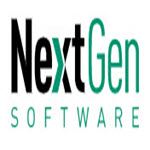Let’s dive into the world of both software engineering and integration. You know, it’s a bit like building a puzzle. Each piece, or software application, is great on its own, but when they all come together, the picture is fantastic. In today’s fast-paced world, integrating different software systems is no longer just a luxury; it’s essential for staying competitive. But why, you ask? Well, let me take you through the ins and outs of the whole software development and software integration process, its benefits, and how it’s reshaping businesses.
Software integration is key to enhancing business efficiency, data accuracy, and customer experience. It connects various applications, streamlining processes and fostering innovation.
What is Software Integration?
First things first, software integration is about getting your different tech tools and systems to talk to each other. Imagine your email marketing tool syncing seamlessly with your CRM solution, or your sales call software subsystems and data automatically updating your inventory system. That’s software system integration in action!
Why is it Important?
In a nutshell, it breaks down silos within your organization. Information flows smoothly, processes are streamlined, and efficiency skyrockets. It’s like having a well-oiled machine where every part works in harmony with the others.
The Evolution of Integration
Remember the old days when data had to be manually transferred from one system to another? Time-consuming and error-prone, right? Thanks to technological advancements, we’ve come a long way from those days. Now, integrations are more about strategic alignment and real-time data sharing. Common data format integration is now very important when discussing software integration as it is independent of applications so that all data is in one format and so doesn’t have to be converted into others depending on the application using it.
Key Points:
- Software integration links different systems for better communication.
- It’s crucial for efficiency and competitiveness.
- Technological evolution has made integration more sophisticated and strategic.

The Benefits of Software Integration
Increased Efficiency
When your systems communicate with each other, manual data entry is reduced, and errors are minimized. This means more time for your team to focus on what they do best.
Improved Data Accuracy
With automated data sharing, the chances of human error are significantly reduced. You get more accurate, reliable data, leading to better decision-making.
Enhanced Customer Experience
Imagine a customer’s details automatically updated across multiple systems and all platforms after a single interaction. This level of coordination leads to a smoother, more personalized customer experience.
Key Points:
- Integration enhances efficiency and reduces errors.
- It leads to better data accuracy.
- The customer experience is greatly improved.

Challenges in Software Integration
While integration is fantastic, it’s not without its challenges. Compatibility issues, data security concerns, and the need for ongoing maintenance are just a few of the hurdles to integrate cloud based applications that you might face. But don’t worry, with careful planning and the right tools, these can be managed effectively.
Key Points:
- Integration can face technical and security challenges.
- Proper planning and tools are essential to overcome these challenges.

How to Successfully Implement Software Integration
Understand Your Needs
Before you jump in, it’s vital to understand what you need. What processes repetitive tasks do you want to streamline? Which data should be shared? This clarity is key.
Choose the Right Tools
Not all integration tools are created equal. Choose ones that align with your specific needs and are known for reliability and ease of use.
Plan for Maintenance
Integration isn’t a one-time thing. Be prepared for ongoing maintenance to ensure everything runs smoothly.
Key Points:
- Start by understanding your specific integration needs.
- Select tools that match your requirements.
- Plan for ongoing maintenance.

FAQs
Q1: What is Software Integration?
Simply put, software integration is the process of linking various software applications to each other system ensure they work together seamlessly. It’s about creating a unified system where data and processes flow smoothly across different, disparate software and development platforms.
Q2: Why is Software Integration Important for Businesses?
It’s crucial because it streamlines business processes, enhances data accuracy, improves customer experiences, and ultimately, boosts efficiency and competitiveness. Think of it as a way to make your entire business operation more cohesive and agile.
Q3: What Are Common Challenges in Software Integration?
You might encounter issues like compatibility between different types of software, data security concerns, and the need for ongoing maintenance and updates. These challenges require strategic planning and the right tools to manage effectively.
Q4: How Do I Choose the Right Integration Tools for My Business?
Focus on tools that align with your business goals, are user-friendly, and have strong support and security features. It’s also wise to consider the scalability of the tools as your business grows.
Q5: Is Software Integration a Costly Endeavor?
The cost can vary widely depending on your business’s size and needs. However, consider it an investment; the efficiency and productivity gains often outweigh the initial cost in the long run.
Q6: How Does Software Integration Improve Customer Experience?
By ensuring that all customer interactions are consistent and customer data is up-to-date across all platforms, integration leads to more personalized, efficient, and error-free customer service.
Q7: Can Small Businesses or Startups Benefit from Software Integration?
Absolutely! Even small businesses can see significant benefits from integration, such as time savings, improved data management, and better customer insights, which are crucial for growth.
Q8: What Impact Does Software Integration Have on Employee Productivity?
It reduces the need for manual data entry and allows employees to focus on more strategic and creative tasks, thereby increasing overall productivity and job satisfaction.
Q9: Is Cloud-Based Integration Preferable to On-Premises Solutions?
Cloud-based solutions offer flexibility, scalability, and often lower upfront costs, making them a popular choice. However, the best option depends on your specific business requirements, including security, data control, and integration needs.
Q10: How Do I Ensure Successful Maintenance of an Integrated System?
Regularly update your systems, monitor integration points for issues, share data and be ready to adapt to new business needs or technological changes. It’s also helpful to have a dedicated team or partner for ongoing support and maintenance.
Q11: How Long Does It Take to Implement Software Integration?
The time frame for complicated process can vary greatly depending on the complexity of the software integration system and the number of systems involved. Simple, single system integrations can take a few weeks, while more complex projects might take several months.
Q12: Can Software Integration Help with Compliance and Regulation Issues?
Yes, it can. Integrated systems ensure that data is handled consistently and can help in maintaining compliance with various regulations, especially concerning data privacy and security.
Q13: How Does Integration Affect Company Culture?
It often leads to a more collaborative and efficient workplace, as teams can access and share information easily. This transparency and ease of access can significantly boost morale and cooperation across departments.
Q14: What is API in the Context of Software Integration?
API (Application Programming Interface) is a set of protocols and tools for building software applications. In an integration system, APIs allow different, software components and systems to communicate with each other, enabling data exchange and functionality sharing.
Q15: Can Software Integration Help in Scaling a Business?
Definitely. Integration facilitates smoother operations, better data management, enterprise resource planning, and streamlined processes, all of which are essential for efficiently scaling a business. It ensures that growth doesn’t lead to operational bottlenecks.
Q16: How Do I Assess the Success of Software Integration?
Measure key performance indicators like data accuracy, process efficiency, employee productivity, the management plans and customer satisfaction before and after integration. Improvements in these areas can indicate successful integration.
Q17: Can Integration Support Remote or Hybrid Work Models?
Yes, especially cloud-based integrations, which offer flexibility and accessibility from anywhere, supporting remote and hybrid work models effectively.
Q18: How Does Integration Affect Data Security?
Properly implemented, it can enhance data security by ensuring consistent data handling and security protocols across disparate systems and business teams. However, it’s crucial to ensure that all integrated systems meet your security standards.
Q19: What Role Does AI Play in Software Integration?
AI can enhance the system performance and integration by automating complex processes, integrating data, providing predictive analytics, and improving decision-making processes. It adds an advanced layer of intelligence and efficiency to integrated systems.
Q20: How Important is User Training in Software Integration?
Extremely important. Proper training ensures that your team can fully leverage the integrated system’s capabilities, leading to better adoption and more effective use of the whole technology stack.

Software Tools for Integration
Expanding your business’s capabilities through software integration requires the right tools. Here’s a broader list of tools that cater to various software integration examples and needs, from simple task automation to complex system integrations. Whether you’re a small business or a software sub systems for a large corporation, there’s something here for everyone.
Zapier
Ideal for automating workflows between web applications. It supports thousands of apps and requires no coding skills.
MuleSoft
Offers a comprehensive platform for more complex integrations, particularly for components suitable for enterprise-level requirements in house software.
IFTTT
Perfect for creating simple connections between apps and IoT devices. It’s user-friendly and great for personal or small business use.
Boomi
Provides a unified platform for data and application integration. It’s known for its low-code development environment.
Jitterbit
Great for connecting SaaS, on-premises, and cloud applications. It also offers powerful API transformation capabilities.
Talend
Offers data, integration platforms and data quality tools, making it ideal for businesses focused on data-driven decisions.
Microsoft Power Automate
Excellent for automating workflows and integrating various Microsoft services and other third-party apps.
Oracle Integration Cloud
Provides a robust suite of tools native integrations for integrating various cloud and on-premises applications, especially for businesses already in the Oracle ecosystem.
Workato
A powerful tool for automating workflows across apps, offering a balance between enterprise-level capabilities and user-friendly design.
IBM App Connect
Ideal for automating workflows and integrating applications, data, AI, and services. It’s particularly beneficial for businesses with complex integration needs.
Each of these tools offers unique features and benefits. Your choice of software integration refers will depend on your specific integration needs, the size of your business, your budget, and the level of complexity you’re comfortable handling. The right integration tool can not only simplify your integration process but also unlock new levels of efficiency and innovation within your organization.

Conclusion
So, what have we learned? Software integration is like a bridge connecting your various software islands, enabling them to work together efficiently. It’s not just about technology; it’s about transforming the way your business operates. From increased efficiency to enhanced customer experiences, the benefits of both vertical integration and horizontal integration are clear. But remember, it’s also about overcoming challenges through careful planning and the right tools.
Embracing Change
In a world where change is the only constant, embracing these software integration solutions is not just smart; it’s essential for staying ahead. It’s about being adaptable, flexible, and ready for the future.
The Bigger Picture
Finally, think of software integration not as an IT task, but as a strategic business move. It’s an investment in your business’s future, laying the foundation for growth and success. So, are you ready to build a legacy system for software parts of your bridge?















